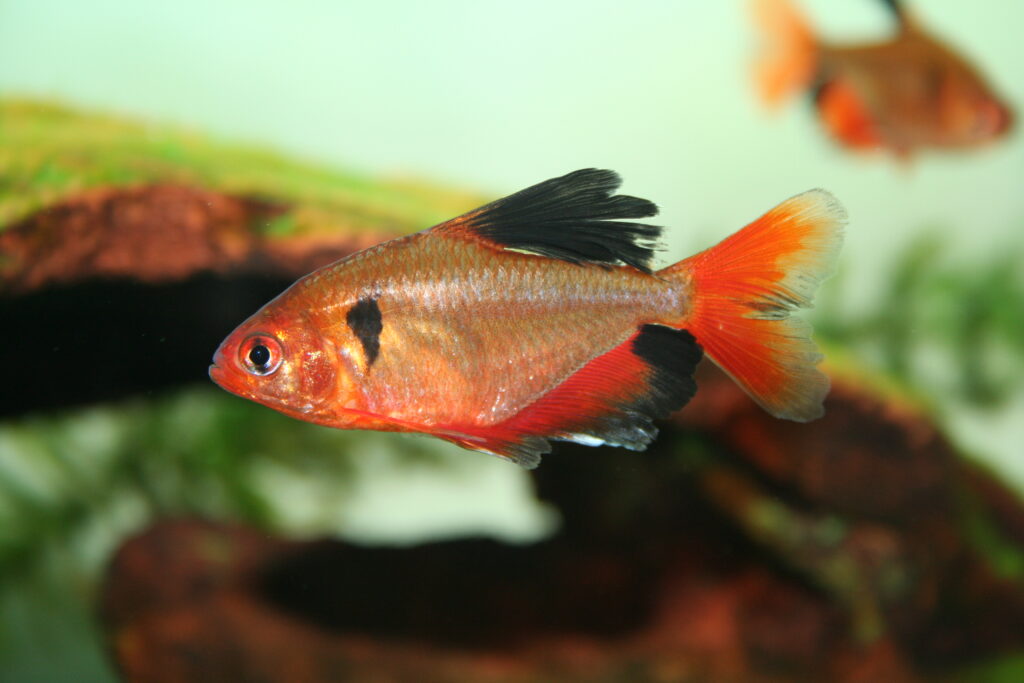You are at the right spot! Let us assist you with the crucial care when introducing tetra fish to your aquarium. Tetra fish are quite popular for both amateurs and professional aquarists. Their colourful features and gentle character make them a household pet; just like every other pet, they require consistent care to remain healthy.
This article is a practical guide for many topics, including Tank, Tetra Mates, Diet, and Tetra Maintenance; whether you are assembling a new aquarium or wish to enhance the conditions of your tetra fish, this Tetra Fish Care sheet will help you in a detailed manner so that you can enjoy these stunning fish for a long period. Here is the information you need to assist theTetra Fish Care Sheet concerning their welfare.
Who Are Tetra Fish?
Originally, tetras were from South America and Africa; they belonged to the Characidae family and were fond of fresh water. They are small, schooling fish and are suitable in a community tank. Some of them include:
Neon Tetras: These fish are popular in the aquarium-keeping community because of their blue and red colours.
Cardinal Tetras: They are like Neon Tetras but with more distinct red stripes. Still, they are popular amongst fish lovers.
Black Skirt Tetras: These are also easily distinguished by the black and silver colours they wear and are a great addition to an aquarium with other fish to set it apart.
Glowlight Tetras: These types of tetras enhance the tank with their orange stripe, which stands out from the fish. Every other variant has different colours and patterns that can also help liven a dull aquarium.
Tank Setup
The first step in applying this Tetra Fish Care Sheet is to ensure a safe and suitable setting for the fish. Some things to be noted are:
Tank Size: If you wish to keep a small school of the tetra fish, then it’s advised that a tank that holds a minimum of 10 gallons is used. The bigger the tank size, the more room there is, ensuring that the water parameters stay constant. If you want to keep larger ones or a bigger school, you might want to get 20 gallons.
Water Conditions: Tetras are known to like soft water that is slightly acidic and can have a pH of around 6.0 to 7.5. Regular water testing is essential, so it is advised to use a reliable testing kit. To ensure that your fish remains in tip-top condition, it is important to maintain water parameters and stable ones.
Filtration: Maintaining water quality depends on water tank filtration, and proper maintenance is mandatory for Tetra fish. Always check the filter size according to your tank; it should fit perfectly, as Tetra fish prefer clean water, just as they did in the wild. Canister and hang-on-back filters perform well in film and circulation processes.
Aquascaping: Plants, ropes, and hiding spots can be added to make an artificial natural habitat for tetras. If there are many spaces in which the fish can hide, they will feel more secure, and their swimming will be amongst the plants. Live plants such as Java fern, Anubias, and Amazon swords can also be added, serving as hiding spots and making the aquarium look even prettier.
Water Parameters
The combination of tetra fish’s health and water conditions is vital, so let’s look at what you need to watch.
Temperature: If the water temperature is kept between 22 degrees Celsius and 26 degrees Celsius (72F to 78F), that is ideal for Tetra fish. To keep the temperature constant, use reliable heaters, but always avoid making harsh changes as that, too, can cause heating stress to the fish.
Ammonia and Nitrite Levels: Ideally, ammonia and nitrite should always be at a zero level. If they go beyond a specific value, they can be toxic and pose a high risk of even killing the fish in some cases. For this reason, monitoring levels regularly with the help of water testing kits always proves beneficial.
Nitrate Levels: A nitrate level below 20 ppm is the ideal limit. You should do routine water changes to help with the levels. This can help to reduce the nitrate levels in a good aquarium.
Feeding Your Tetra Fish
Another task that needs to be done is feeding the Tetra Fish Care Sheet. The following explains how to feed your fish best so that they have a balanced diet:
Quality Food: Good flake or pellet food for tropical fish is best. Products that contain spirulina and others are more nutritious and beneficial. Tetra foods should be good, too.
Variety: The diet that tetras are forced to eat should not be monotonous. Enhance their diet by adding frozen or freeze-dried brine shrimp, bloodworms, daphnia, etc. This will boost their health and encourage them to search for food naturally.
Feeding Schedule: Tetra fish should be fed in small portions once or twice a day. Be careful not to overfeed them to minimize water pollution. Increased feeding can potentially improve the waste in the tank, eventually worsening the fish’s living conditions.
Tank Mates
You need to be careful when choosing tank mates for tetra fish. They don’t create a ruckus so you can have a few small, non-violent fish as their companions.
Guppies: Guppies are vibrant fishes and are gentle and go along with the tetras perfectly.
Corydoras Catfish: These bottom-dwelling fish are beneficial because they are peaceful and promote a good environment by eating leftover food.
Plates: Adding to the diversity of the aquarium, platies are compatible with tetras.
Rasboras: As schooling and nonaggressive fish, rasboras also qualify as great companions Avoid introducing larger or aggressive fish, as they will likely stress or harm your tetras. It is prudent for you to check the tank mates beforehand to establish compatibility.
Health and Disease Prevention
This is because eliminators will keep your tetra fish from diseases.
Here are some guidelines to help you ward off infection and diseases:
Behaviour: Inspect your fish at least twice daily for signs of illness, such as dull colour patterns and unusual movements associated with the fish having low energy or sick fish that tend to be antisocial. New fish being added to your aquarium should be placed in a container for at least 14 days for good hygiene and fish health, enabling you to control the introduction of infections to your other fish.
Maintaining clean water: Giving the fish clean water and content free of inactive materials helps keep their environment healthy. You should change a quarter of the water every fourteen days.
Regular Maintenance
Maintaining your aquarium is vital for the health of the Tetra Fish Care Sheet.
Here is, therefore, what you have to observe:
Water changes: the fish must be kept in suitable conditions with low nitrate levels to avoid stressing them. Employ a siphon during water changes to remove debris from the substrate. This will ensure the clarity and quality of the water.
Filter Maintenance: Clean your filter according to the manufacturer’s instructions, but refrain from over-cleaning the unit, which could eliminate the beneficial bacteria. Place the filter media in tank water to moisten the beneficial bacteria.
Monitor Parameters: Regularly test the water for the required pH, ammonia, nitrite and nitrate levels to balance everything. Compiling a log of the parameters recorded to compare the changes over the period may prove useful.
Common Problems and Solutions
Some issues arise even with the best care given. A few of the problems that arise and their corresponding solutions are as follows:
Fin Rot: This tends to happen due to low water quality; increasing the water changes and using a medication specifically for fin rot is advised. Restoring proper water parameters is a vital part of the remedy.
Ich (White Spot Disease): This parasitic infection that fishes get; it is rather common. One way to help eliminate it is to raise the water temperature and add aquarium salt. There also are tablets and other forms of medication that help fix it.
Stress: Various health conditions are caused by stress. Always ensure that the tank is reasonably sized, well-planted and doesn’t have overly aggressive tank mates. It’s also quite helpful to provide hiding spots for your fish, making them feel more secure.
Breeding Tetra Fish
For those who wish to breed tetra fish, it is crucial to create the conditions.Tetra breeding can be fun, but it also requires some prior preparation.
Here is how you can approach tetra breeding:
First, set up a separate tank for breeding and ensure the water is slightly acidic and soft. Insert a sponge filter to avoid the sucking up of eggs. Using spawning mops or providing fine-leaved plants for females to insert eggs into is highly advised.
Since these females scatter their eggs while mating, it is ideal to have more surfaces available. After getting a breeding pair, make sure to condition them by offering high-quality food so they can feel encouraged to spawn. Once they are about to spawn, observe how the female looks round and filled with eggs.
After this step, the adults are removed to avoid intervention. The temperature will range around 24-48 degrees Celsius for the eggs to hatch; for the first 3 weeks, ensure that the fry infusoria or specialized fry food is fed. The feeding may be repeated every 2 hours. Ultimately, this Tetra Fish Care Sheet provides a comprehensible approach to ideal tetra fish handling.
Conclusion: Tetra Fish Care Sheet
Considering all the requirements and perfect environmental conditions to allow the peppers to flourish, handling these charming fish is possible. All that is required is a commitment to look after their regular Maintenance and thorough observation to provide them with the optimal conditions needed. With sufficient time and care, you will make them feel at home in your aquarium, allowing them to brighten it up for a long time.
FAQs: Tetra Fish Care Sheet
What Can Be An Optimal Tank For A School Of Tetra Fish?
The species of fish determine tank size. As exemplified for tetras, a school of the species would require a tank with a minimum capacity of 10 gallons; however, if the school size is larger, it could exceed 20 gallons. For smaller variants of the Tetra Fish Care Sheet, a lower-capacity tank like 5-gallon can also be a great fit.
What Type Of Water Can Tetras Survive In?
The Tetra Fish Care Sheet can survive in soft water, but slightly acidic water has been found to be their most optimal environment.
How Often Is It Adequate To Feed Tetra Fish?
Feeding tetras 2-3 small meals daily but ensuring that the tetras finish consuming all the food is ideal as it aids both growth and nutrition.
What Are The Signs And Symptoms Of A Healthy Tetra Range Fish?
Animated, vibrant, and colour-rich tetra fishes, which can be seen swimming in groups, can be deemed healthy and is a good indicator for people looking to buy it.
How Should I Treat My New Tetra To Ensure No Diseases Arise?
Averting sickness through quarantining newly arrived tetras and regular water maintenance can greatly assist in preventing diseases in your tetra fish.







